Going Off Grid ?....Ice Box Storage Fridge and Modern Day Ice House.
Here in Canada our Rivers and Lakes are frozen to the point of 3 feet deep. This provides an excellent opportunity to harvest from the waters Ice blocks for storage and use all year long. The idea of ice houses is long gone now, with the electricity and Fridges and Freezers. Back in the olden days, before electricity, they built and used Ice Storage houses, and many homes had these types of Ice Boxes.
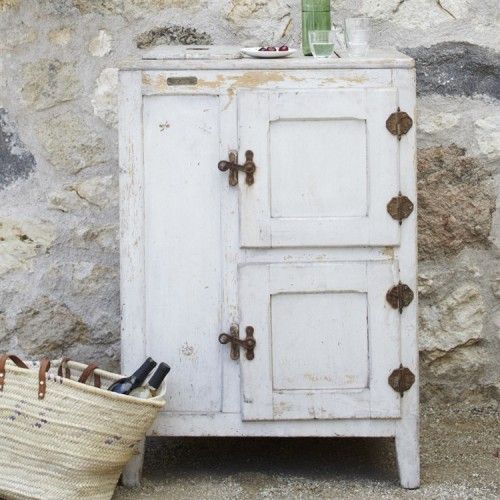
This one is made of wood, but later they started building them with metal, such as this.
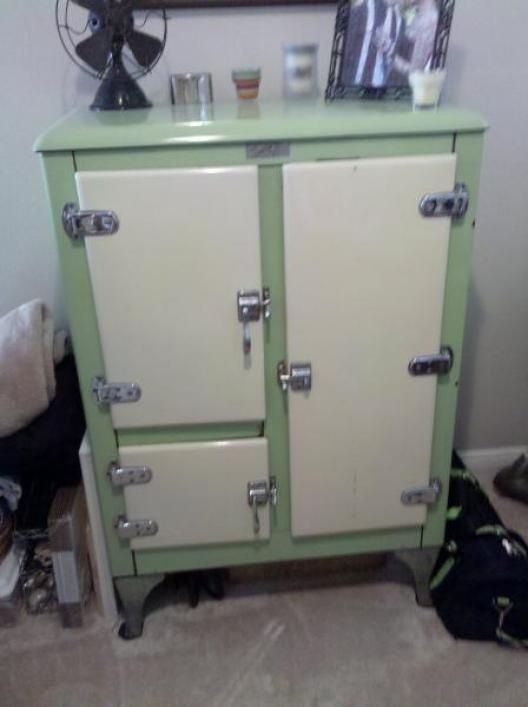
Now the idea was to put blocks of ice in the bottom and the top of the box and store your food in the middle parts of the box. I was personally fortunate to have found one of these metal Ice boxes at a yard sale last year and have it stored in my mud room. I put plastic bottles of water frozen in the top and bottom and store some of my vegetables and fruits in it all summer long, and just rotate the frozen water bottles when I see they are beginning to melt. Its like my root cellar until I can get me one built.
Today the Amish communities still build and use Ice storage houses all summer long for all their refrigeration needs. Today ice storage houses are well insulated using modern day technology in our materials to supply ice year round.
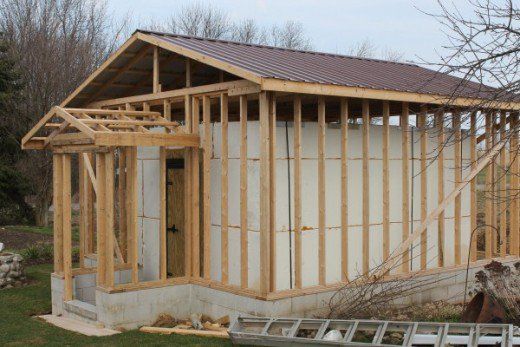
Using 20” thick Styrofoam blocks you can set a layer of Styrofoam on a cement slab on the floor, then you would stack up the Styrofoam blocks at each of the walls. After the walls are constructed you would then do the top covered with another row. Similar concept to building an igloo, but using Styrofoam blocks. Once the blocks are stacked, you then use metal binding, like straps to bundle lumber, and you would tie it all together. Then you would use a chainsaw and cut down each joint. After you would use the spray foam, the expandable kinds, and seals the joints forming one large Styrofoam box on the cement or concrete ground. Next we cut the door at a bevel. Also the door itself is beveled to ensure that it will be sealed in tight while the door is closed. An Industrial door latch is harnessed to the door, with a rubber lining as a perfect seal for the door. After you would ensure to install or incorporate a floor drain for any ice that melts. Then you would typically want to cover the Styrofoam with some form of exterior building product.
The Styrofoam block is then covered with another exterior building with standard gable roof to protect the Styrofoam. Some Amish build these ice houses in the corner of another existing building. Mice may be a challenge because they tend to tunnel through the Styrofoam searching for food stored inside. Ice storage houses are typically left open all around the outside to monitor for mice and or potential animal activity.
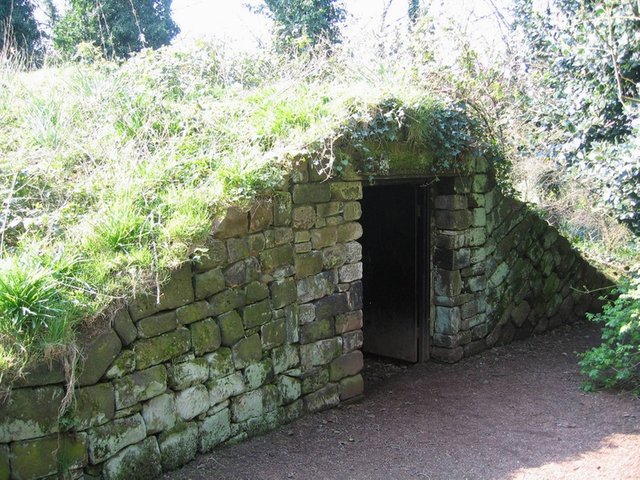
This is a picture of a ice storage building in Europe. It resembles the concept of a root cellar.
In order to ensure that the water that you are storing as ice is free from any pollution you would typically wait until the temperatures drop to well below freezing for a period long enough to freeze the pond solid, so that you may walks on it. then you would flood the pond with fresh water, like a skating rink, to the thickness of the desired ice. Then once it is safe to do so, you walk onto the new ice, and cut the desired Ice block you need, and stack them into the ice house. A tong like tool is used to life the ice blocks and place them stacked on top of each other.
In olden days when they did not have an adequate means to insulate the ice house, they would use straw or sawdust to slow the melt of the ice on the warmer days, its like the sawdust seals the ice from the air outside.
I wrote this post, to get homesteaders alike who envision to go off Grid one day, like I do, to start learning the skills they would need to adopt to make life just a little easier. It would not necessarily be required to be living right by a pond or lake to get the ice. If you had a snow machine and a large sled, then you could transport the cut blocks on that and store them.
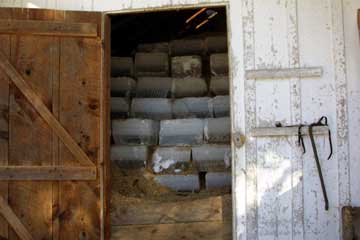
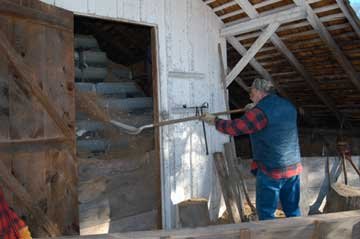



Image Sources:
https://www.geocaching.com/geocache/GCQ5HV_ice-house?guid=b1bf5a0f-f26e-45c9-a7be-8487e3d16d67
https://hubpages.com/food/-Our-Amish-Friends-Build-a-New-Ice-Storage-House
https://www.instappraisal.com/appraisal/antique-ice-box-crystal-refridgerator-company

Good article for folks living close lakes or rivers. My grandparents had an ice house of sorts. The house was lined with straw bales and large blocks of ice were cut from the lake about a km away. The ice lasted a really long time.
Nice article! My dad used to refer to the refrigerator as the ice box, so my mom explained what they were to me. It’s really cool that humans can be so inventive.
Mike Oheler notes something interesting about building underground houses. That cold flows downhill.
The earth being about 60 degrees year round, when you heat the air to a comfortable 70 degrees, the cold from the walls flows down to the lowest parts of the house.
With this, he has even kept icecream frozen in hole dug in the lowest part of the house.
Yes agreed, in many homes where I live people still have sand floors in their basements. They would dig holes to place cardboard boxes of carrots and potatoes and apples cool and fresh all winter from their harvests of their gardens. Thanks
Really interesting article! I enjoyed learning a bit about the past. Thanks. There is a canyon that I like to go hike in called Icehouse canyon. There are a bunch of old cabins up there. I bet it got it's name because it had ice storage houses like the ones you are describing here!
Perhaps, where about's is this canyon that you hike, I am big into hiking. Thanks
Icehouse canyon is in the San Gabriel mountains in California.
I wonder why they don't make it a cellar first? The Amish. You would think if they are going through all that trouble, go ahead and dig the hole. Of course, I think part of the problems with some cellars is they weren't deep enough. I think you have to go down 8 feet to get at that constant ground temperature. From there, you insulate all around.
There is a new house building technique that uses a frame and then pours concrete through out, even the roof. I think that would be the best starting point, after you dug the hole. Then you would have a concrete barrier everywhere except the door. Then on the inside use insulation to cut down even more heat transfer. Then line your walls, floor and ceiling with ice.
Probably would cost a bit of money, however. But, it would last longer than the wood or mud versions.
I would think that a cellar is for storing your root vegetables, from gardens in the summer, and you would not want your carrots and potatoes and such to freeze, as that amount of ice would certainly freeze your crops.
Two different buildings.
The cellar works, because the ground doesn't get above or below a certain temperature.
True. Yes a root cellar has to be ventilated out, where as an ice house does not. Thanks
Whats an ice storage? Great post. I like to post about life and photography, if your interested Hun, take a look. X from @diljeetdil
If read the post then you would know what Ice Storage was all about...hun
I meant the ice storage, root cellar? I know what is, Sorry, I should clarify. Its just in the root cellar picture its sunny. But I understand the use saw dust but still its tricky when its warm. So the best option is using the closed ones, in your first pics?
Great post anyway
Thank you and yes, underground ice storage will stay cold all summer, we only have warmer summer months for 2 months of the year the rest is rather chilly.
Thanks, great to know.
How cool - Excuse the pun! But seriously that's a nice old piece of furniture and history you have there
Thank you, it was a great Yard Sale find.
Amazing job!! :))
Thank you
Wow, I didn't know that there you used to use (or still use) Ice Storage ! Is really a great idea to keep your food fresh in that hot days. I live in a tropical country so a Fridge is needed.. 32°C almost all the time!
Thanks for sharing this super interesting to read! :)
This kind of passive thermal design is so easy that it should be incorporated in much of the design of modern houses